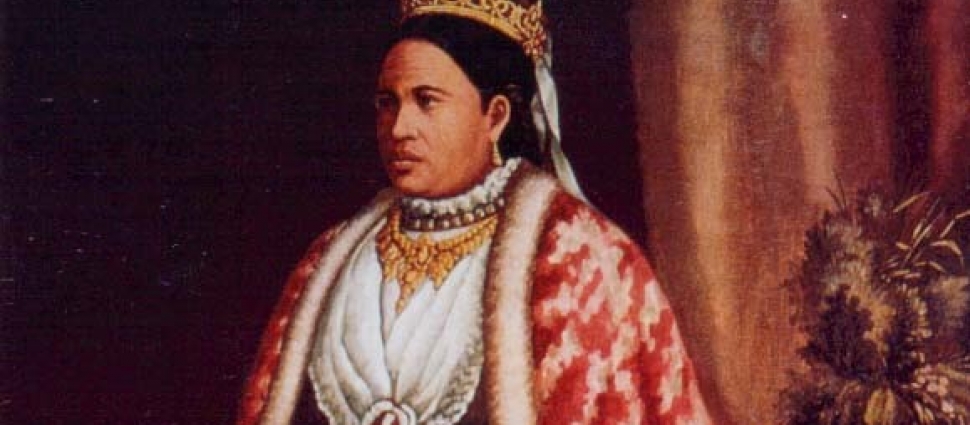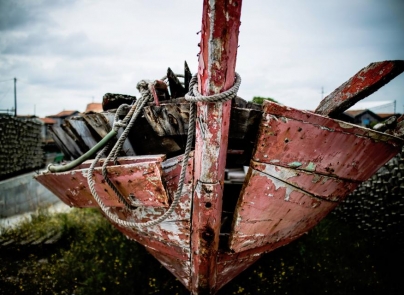Queen Ranavalona II of Madagascar

Queen Ranavalona II of Madagascar
Missionaries to Madagascar trembled when they heard the name of the new queen – Ranavalona II. They remembered a previous queen by the same name, who had cruelly persecuted her Christian subjects. But Ranavalona II was nothing like her predecessor Ranavalona I.
Embracing a Persecuted Religion
Ranavalona II was born as Ramona in 1829 in the palace of Ambatomanoina, in the Central Highlands of Madagascar. Daughter of Prince Razakaratrimo, she was raised with all the comforts of her noble status. In spite of Ranavalona I’s strict measures against Christians, she met many believers, mostly through her brother Ramonjamanana (Ramonja for short), who became a Christian in 1846.
One of these Christians was Rainiasivola, a former diviner who had served in that capacity under Ramona’s father. After his conversion, Rainiasivola burned his idols. He and Andriantsiamba, another friend of Ramonja, instructed Ramona in the Christian faith, while another friend, Razafinirina, provided her with a Bible. All three of these Christians were eventually arrested and killed. Rainiasivola was thrown into a deep ravine while Andriantsiamba was burned alive with three other martyrs. These events left a lasting impression in Ramona’s mind.
Ranavalona I’s persecution of Christian intensified with time, as the queen feared that adopting what she considered a western religion would compromise the freedom and traditions of her country. Just in 1849, the year when Andriantsiamba and Rainiasivola were arrested, 1,900 other Christians were fined and jailed. We don’t know how Ramona and her brother escaped investigations.
Ranavalona I died in 1861 and her son, Prince Rakoto, succeeded her as King Radama II. Unlike his mother, he allowed religious freedom and re-opened Madagascar to foreigners. He also reopened many schools that had been previously closed. Missionaries flocked the island, especially those sent by the London Missionary Society, the first Protestant mission to come to Madagascar in 1818. Through their preaching and teaching, Ramona grew in her faith.
Royal Intrigues
Radama II died unexpectedly in 1863, strangled in a coup led by his prime minister Rainivoninahitriniony. The public was told that he had committed suicide. Radama’s wife Rabodo was allowed to succeed her husband on the condition that she and future rulers would co-rule with their prime ministers, representatives of the powerful Hova class of free citizens. Rabodo complied, adopting the throne name Rasoherina. She also accepted to marry Rainivoninahitriniony.
Rainivoninahitriniony soon showed his true colors of a violent despot addicted to liquor. After suffering a year of abuses and threats at knife point, Rasoherina deposed him, appointing in his place his younger brother Rainilaiarivony. As it was customary, she contracted a political marriage with him too.
But the political intrigue continued, so much that when Rasoherina died five years after her accession to the throne, some thought she had been killed by Rainilaiarivony. In any case, Ramona was next in the succession to the throne.
The First Christian Queen
Adopting the throne name of Ranavalona II, Ramona was crowned on 3 September 1868 and contracted the customary marriage with her Prime Minister, which was still Rainilaiarivony. She was officially the first Christian queen of Madagascar.
The night before her coronation, Ramona held a private prayer meeting with Rainilaiarivony and five pastors who had escaped the persecution. Later, these pastors continued to assist her throughout her reign and to preach in the church she built within her palace grounds. Her decision to call local pastors to her church was in conformity with her promotion of local churches that could be independent of foreign missionaries (although she continued to appreciate their work).
Her was obvious from the start, as a Malagasy Bible sat in the place of the royal idols that had been present at every coronation. None of the previous royal diviners were allowed to attend. And the dome that sheilded her from the sun had the text of Luke 2:14 embroidered on three sides: “Glory to God in the highest, and on earth peace among those with whom he is pleased.”
Her baptism, however, took place a year after her coronation. Rainilaiarivony was baptized with her. The sacrament was performed by pastor Andriambelo, one of the pastors who had escaped the previous persecution. It took place within the royal court, in the presence of local Malagasy officials and pastors. No foreigners were present – another way for the queen to signal that Christianity was not a foreign religion (as Ranavalova I had stated). After four months of catechization, the royal couple was admitted to the Lord’s Supper.
As it often happened, the queen’s example did much to encourage her subjects to embrace Christianity. In 1869, the year of the queen’s baptism, the estimated number of Christians in Madagascar was 37,000. One year later, it had risen to 250,000 (in a total population of 80,000), and these figures continued to grow.
This does not mean that the whole population of Madagascar agreed with the queen’s reforms. Some were nostalgic of the reign of Ranavalona I and her nationalistic policies. A group of rebels rose against Ranavalona II in 1869, but they were quickly defeated, and the idols they were brandishing were destroyed. Soon after this, Ranavalona II commanded the destruction of all idols.
Most Christians, however, were sincere. Johannes Johnson, a Norwegian Lutheran missionary and hymn-writer who served in Madagascar for 15 years, commented: “Never in my life have I heard songs of praise being intoned with such hearty, powerful joy as when an Independent congregation rises to sing, in Malagasy, Holy, Holy, Holy.”[1]
In spite of her banning of idols, Ranavalona II continued to proclaim freedom of religion in her kingdom. At the same time, she banned some traditional practices, such as polygamy, that were in contrast with Christian ethics. As Rasoherina had done before her, she forbade all trade in alcohol and in slaves.
She also banned markets on Sundays, which were proclaimed holidays in all her kingdom, and promoted the building of churches and the work of evangelization around her country. A strong believer in the power of education, she mandated school for all boys and girls until age 14, and encouraged the publication of both European and Malagasy works.
Unlike Ranavalona I, she welcomed western ideas and promoted the construction of paved roads, railways, and aqueducts. For the first time in Madagascar, she allowed the use of stone in building (instead of the previous wood). This allowed some church buildings to last until today. Some of these churches were named after the Malagasy martyrs.
Some critics of Ranavalona II have attributed the French conquest of Madagascar to her opening of her land to foreigners. Instead, she fought hard any demand by the French government. When, in 1883, a French fleet bombarded and destroyed two posts on the Western coast of Madagascar, threatening further destruction if the queen didn’t recognize French rule, Ranavalona II reassured her people: “God made me a woman, still, when anyone attempts to seize that which He has given me, and the country which my ancestors conquered is threatened, then I feel strong to go forth as your leader, for I should feel ashamed…if I did not protect what God had entrusted to me.”[2]
She died just two months after this, at the age of 54, and her cousin Ranavalona III succeeded her. Regardless of Ranavalona III’s continued resistance against invasions, French troops occupied the island in 1896, declaring it a French colony, and the queen was exiled. Despite this sad turn of events, Christianity has continued to grow in the island.
[1] Bengt Sundkler, Christopher Steed, A History of the Church in Africa, Cambridge University Press 2000, 499
[2] Letter from Procter to Rainilaiarivony, Nov 9, 1882, cited in Mervyn Brown, History of Madagascar, Damien Tunnacliffe, 1995, 208





